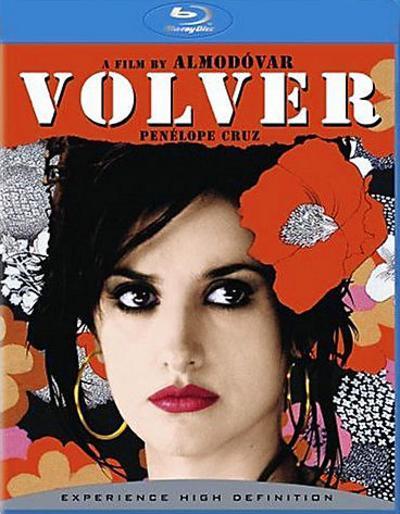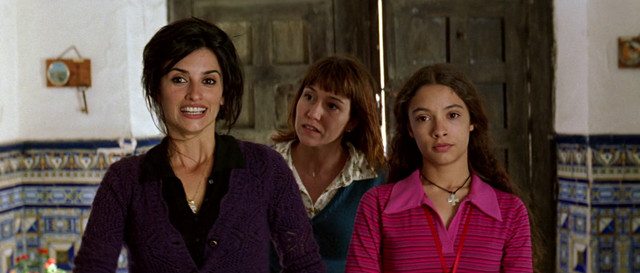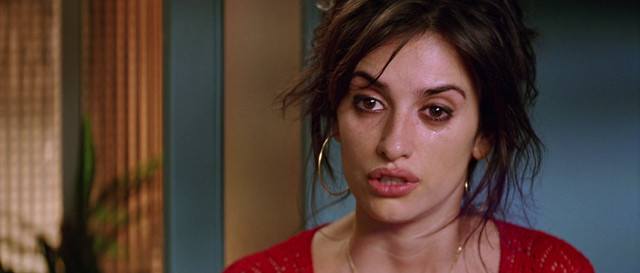![]()
History, Theory, Criticism
Edited by Jonathan Kahana and Foreword by Charles Musser
Provides the most comprehensive overview of documentary film assembled to date, with over 100 articles on myriad topics
Features a substantial main introduction and section introductions throughout to establish key contexts and important critical issues
Ranges widely across continents, filmmakers, and subgenres, addressing early documentary, avant-garde, propaganda, the essay film, and more
Proposes a fresh canon of films and texts as a starting point for further exploration into the world of nonfiction cinema
Includes foreword from the renowned film historian and filmmaker Charles Musser
1. Jonathan Kahana, Introduction To Section I / Jonathan Kahana
2. Rick Altman, “From Lecturer’s Prop To Industrial Product: The Early History Of Travel Films” (2006) / Jonathan Kahana
3. Anonymous, “Burton Holmes Pleases A Large Audience At The Columbia” (1905) / Jonathan Kahana
4. Kristen Whissel, “Placing The Spectator On The Scene Of History: Modern Warfare And The Battle Reenactment At The Turn Of The Century” (2008) / Jonathan Kahana
5. Dai Vaughan, “Let There Be Lumière” (1999) / Jonathan Kahana
6. Boleslas Matuszewski, “A New Source Of History” (1898) / Jonathan Kahana
7. Tom Gunning, “Before Documentary: Early Nonfiction Films And The ‘view’ Aesthetic” (1997) / Jonathan Kahana
8. Edward S. Curtis Et Al., “The Continental Film Company” (1912) / Jonathan Kahana
9. W. Stephen Bush, Review Of In The Land Of The Head Hunters (194) / Jonathan Kahana
10. Catherine Russell, “Playing Primitive” (1999) / Jonathan Kahana
11. Anonymous, “Movies Of Eskimo Life Win Much Appreciation” (1915) / Jonathan Kahana
12. Anonymous, Review Of Nanook Of The North (1922) / Jonathan Kahana
13. John Grierson, “Flaherty’s Poetic Moana” (1926) / Jonathan Kahana
14. John Grierson, “Flaherty” (1931-32) / Jonathan Kahana
15. Hamid Naficy, “Lured By The East: Ethnographic And Expedition Films About Nomadic Tribes; The Case Of Grass” (2006) / Jonathan Kahana
16. Béla Balázs, “Compulsive Cameramen” (1925) / Jonathan Kahana
17. Anonymous, “New Films Make War Seem More Personal” (1916) / Jonathan Kahana
18. Nicholas Reeves, “Cinema, Spectatorship, And Propaganda: Battle Of The Somme (1916) And Its Contemporary Audience” (1997) / Jonathan Kahana
19. Jonathan Kahana, Introduction To Section II / Jonathan Kahana
20. Robert Allerton Parker, “The Art Of The Camera: An Experimental “Movie”” (1921) / Jonathan Kahana
21. Siegfried Kracauer, “Montage” (1947) / Jonathan Kahana
22. Annette Michelson, “The Man With The Movie Camera: From Magician To Epistemologist” (1972) / Jonathan Kahana
23. Seth Feldman, “Cinema Weekly And Cinema Truth: Dziga Vertov And The Leninist Proportion” (1973) / Jonathan Kahana
24. Dziga Vertov, “We: Variant Of A Manifesto” (1922) / Jonathan Kahana
25. Jay Leyda, “Bridge” (1964) / Jonathan Kahana
26. Mikhail Iampolsky, “Reality At Second Hand” (1991) / Jonathan Kahana
27. Joris Ivens, “The Making Of Rain” (1969) / Jonathan Kahana
28. Joris Ivens, “Reflections On The Avant-Garde Documentary” (1931) / Jonathan Kahana
29. Tom Conley, “Documentary Surrealism: On Land Without Bread” (1986) / Jonathan Kahana
30. John Grierson, “The Documentary Producer” (1933) / Jonathan Kahana
31. John Grierson, “First Principles Of Documentary” (1932-34) / Jonathan Kahana
32. Otis Ferguson, “Home Truths From Abroad” (1937) / Jonathan Kahana
33. Charles Wolfe, “Straight Shots And Crooked Plots: Social Documentary And The Avant-Garde In The 1930s” (1995) / Jonathan Kahana
34. Samuel Brody, “The Revolutionary Film: Problem Of Form” (1934) / Jonathan Kahana
35. Leo T. Hurwitz, “The Revolutionary Film: Next Step” (1934) / Jonathan Kahana
36. Ralph Steiner And Leo T. Hurwitz, “A New Approach To Film Making” (1935) / Jonathan Kahana
37. Willard Van Dyke, Letter From Knoxville (1936) / Jonathan Kahana
38. Ralph Steiner, Letter To Jay Leyda (1935) / Jonathan Kahana
39. John T. Mcmanus, “Down To Earth In Spain” (1937) / Jonathan Kahana
40. Charles Wolfe, “Historicizing The “Voice Of God”: The Place Of Voice-Over Commentary In Classical Documentary” (1997) / Jonathan Kahana
41. Steve Neale, “Triumph Of The Will: Notes On Documentary And Spectacle” (1979) / Jonathan Kahana
42. Richard Griffith, “Films At The Fair” (1939) / Jonathan Kahana
43. Jonathan Kahana, Introduction To Section III / Jonathan Kahana
44. James Agee, Review Of Iwo Jima Newsreels (1945) / Jonathan Kahana
45. James Agee, Review Of San Pietro (1945) / Jonathan Kahana
46. Thomas Cripps And David Culbert, “The Negro Soldier (1944): Film Propaganda In Black And White” (1979) / Jonathan Kahana
47. André Bazin, “On Why We Fight: History, Documentation, And The Newsreel” (1946) / Jonathan Kahana
48. Jim Leach, “The Poetics Of Propaganda: Humphrey Jennings And Listen To Britain” (1998) / Jonathan Kahana
49. George C. Stoney, “Documentary In The United States In The Immediate Post-World War II Years” (1989) / Jonathan Kahana
50. Zoe Druick, “Documenting Citizenship: Reexamining The 1950’s National Film Board Films About Citizenship” (2000) / Jonathan Kahana
51. Srirupa Roy, “Moving Pictures: The Films Division Of India And The Visual Practices Of The Nation-State” (2007) / Jonathan Kahana
52. Jennifer Horne, “Experiments In Propaganda: Reintroducing James Blue’s Colombian Trilogy” (2009) / Jonathan Kahana
53. Peter Watkins With James Blue And Michael Gill, “Peter Watkins Discusses His Suppressed Nuclear Film The War Game” (1965) / Jonathan Kahana
54. Jonathan Kahana, Introduction To Section IV / Jonathan Kahana
55. Jean Painlevè, “The Castration Of Documentary” (1953) / Jonathan Kahana
56. Jean Cocteau, “On Blood Of The Beasts” (1963) / Jonathan Kahana
57. Lindsay Anderson, “Free Cinema” (1957) / Jonathan Kahana
58. Tom Whiteside, “The One-Ton Pencil” (1962) / Jonathan Kahana
59. Edgar Morin, “Chronicle Of A Film” (1962) / Jonathan Kahana
60. Jonathan Rosenbaum, “Radical Humanism And The Coexistence Of Film And Poetry In The House Is Black” (2003) / Jonathan Kahana
61. Jean Rouch With Dan Georgakas, Udayan Gupta, And Judy Janda, “The Politics Of Visual Anthropology” (1977) / Jonathan Kahana
62. Ricky Leacock, “For An Uncontrolled Cinema” (1961) / Jonathan Kahana
63. Bruce Elder, “On The Candid-Eye Movement” (1977) / Jonathan Kahana
64. Jonas Mekas, “To Mayor Lindsay / On Film Journalism And Newsreels” (1966) / Jonathan Kahana
65. Jeanne Hall, “Realism As A Style In Cinema Verite: A Critical Analysis Of Primary” (1991) / Jonathan Kahana
66. Margaret Mead, “As Significant As The Invention Of Drama Or The Novel” (1973) / Jonathan Kahana
67. Jonathan Kahana, Introduction To Section V / Jonathan Kahana
68. Robert Stam, “Hour Of The Furnaces And The Two Avant Gardes” (1981) / Jonathan Kahana
69. Juan Carlos Espinosa, Jorge Fraga, Estrella Pantin, “Toward A Definition Of The Didactic Documentary: A Paper Presented To The First National Congress Of Education And Culture” (1978) / Jonathan Kahana
70. Norm Fruchter, Marilyn Buck, Karen Ross, And Robert Kramer, “Newsreel” (1969) / Jonathan Kahana
71. Frederick Wiseman With Alan Westin, “”You Start Off With A Bromide”: Conversation With Film Maker Frederick Wiseman” (1974) / Jonathan Kahana
72. David Macdougall, “Beyond Observational Cinema” (1975) / Jonathan Kahana
73. Pauline Kael, “Beyond Pirandello” (1970) / Jonathan Kahana
74. Pearl Bowser, “Pioneers Of Black Documentary Film” (1999) / Jonathan Kahana
75. Michael Chanan, “Rediscovering Documentary: Cultural Context And Intentionality” (1990) / Jonathan Kahana
76. Santiago Alvarez With The Editors Of Cineaste, [—]5 Frames Are 5 Frames, Not 6, But 5″: An Interview With Santiago Alvarez” (1975) / Jonathan Kahana
77. Abé Mark Nornes, “The Postwar Documentary Trace: Groping In The Dark” (2002) / Jonathan Kahana
78. Emile De Antonio With Tanya Neufeld, “An Interview With Emile De Antonio” (1973) / Jonathan Kahana
Annette Michelson, Reply To De Antonio / Jonathan Kahana
79. Bill Nichols, “The Voice Of Documentary” (1983) / Jonathan Kahana
80. James Roy Macbean, “Two Laws From Australia, One White, One Black: The Recent Past And The Challenging Future Of Ethnographic Film” (1983) / Jonathan Kahana
81. Lee Atwell, Review Of Word Is Out (1979) / Jonathan Kahana
82. Julia Lesage, “The Political Aesthetics Of The Feminist Documentary Film” (1978) / Jonathan Kahana
83. E. Ann Kaplan, “Theories And Strategies Of The Feminist Documentary” (1983) / Jonathan Kahana
84. Jill Godmilow, “Paying Dues: A Personal Experience With Theatrical Distribution” (1977) / Jonathan Kahana
85. Coco Fusco, “A Black Avant-Garde? Notes On Black Audio Film Collective And Sankofa” (1988) / Jonathan Kahana
86. John Greyson, “Strategic Compromises: Aids And Alternative Video Practices” (1990) / Jonathan Kahana
87. Jonathan Kahana, Introduction To Section VI / Jonathan Kahana
88. Robert Sklar, “Documentary: Artifice In The Service Of Truth” (1975) / Jonathan Kahana
89. Chick Strand, “Notes On Ethnographic Film By A Film Artist” (1978) / Jonathan Kahana
90. Jonas Mekas, “The Diary Film: A Lecture On Reminiscences Of A Journey To Lithuania” (1972) / Jonathan Kahana
91. Michael Renov, “Toward A Poetics Of Documentary” (1993) / Jonathan Kahana
92. Trinh T. Minh-Ha, “Mechanical Eye, Electronic Ear And The Lure Of Authenticity” (1984) / Jonathan Kahana
93. Brian Winston, “The Tradition Of The Victim In Griersonian Documentary” (1988) / Jonathan Kahana
94. J. Hoberman, “Shoah: The Being Of Nothingness” (1985-86) / Jonathan Kahana
95. Claude Lanzmann With Marc Chevrie And Hervt Le Roux, “Site And Speech: An Interview With Claude Lanzmann About Shoah” (1985) / Jonathan Kahana
96. Linda Williams, “Mirrors Without Memories: Truth, History, And The New Documentary” (1993) / Jonathan Kahana
97. Errol Morris With Peter Bates, “Truth Not Guaranteed: An Interview With Errol Morris” (1989) / Jonathan Kahana —
Contents note continued: 98. Michael Moore With Harlan Jacobson, “Michael & Me” (1989) / Jonathan Kahana
99. Thomas Waugh, “”Acting To Play Oneself”: Notes On Performance In Documentary” (199O) / Jonathan Kahana
100. Phillip Brian Harper, “Marlon Riggs: The Subjective Position Of Documentary Video” (1995) / Jonathan Kahana
101. Paula Rabinowitz, “Melodrama/male Drama: The Sentimental Contract Of American Labor Films” (2002) / Jonathan Kahana
102. Marsha Orgeron And Devin Orgeron, “Familial Pursuits, Editorial Acts: Documentaries After The Age Of Home Video” (2007) / Jonathan Kahana
103. Vivian Sobchack, “Inscribing Ethical Space:10 Propositions On Death, Representation, And Documentary” (1984) / Jonathan Kahana
104. Paul Arthur, “Jargons Of Authenticity (Three American Moments)” (1993) / Jonathan Kahana
105. Jonathan Kahana, Introduction to Section VII / Jonathan Kahana
106. Harun Farocki And Jill Godmilow With Jennifer Horne And Jonathan Kahana, “A Perfect Replica: An Interview with Harun Farocki and Jill Godmilow” (1998) / Jonathan Kahana
107. Rachel Gabara, “Mixing Impossible Genres: David Achkar and African Autobiographical Documentary” (2003) / Jonathan Kahana
108. Jean-Marie Tend, “Writing on Walls: The Future of African Documentary Cinema” (2010) / Jonathan Kahana
109. Chris Berry, “Getting Real: Chinese Documentary, Chinese Postsocialism” (2007) / Jonathan Kahana
110. Wu Wenguang, “DV: Individual Filmmaking” (2006) / Jonathan Kahana
111. Richard Porton, “Weapon of Mass Instruction: Michael Moore’s Fahrenheit 9/11” (2004) / Jonathan Kahana
112. Scan Macdonald, “Up Close and Political: Three Short Ruminations on Ideology in the Nature Film” (2006) / Jonathan Kahana
113. Amy Villarejo, “Bus 174 and the Living Present” (2006) / Jonathan Kahana
114. Barbara Klinger, “Cave of Forgotten Dreams: Meditations on 3D” (2012) / Jonathan Kahana.
http://nitroflare.com/view/C0386CC63CE324A/The_Documentary_Film_Reader__History%2C_Theory%2C_Criticism_%282016%29_Jonathan_Kahana.pdf
http://uploadgig.com/file/download/a7efb1434344bc39/The Documentary Film Reader_ History Theory Criticism 2016 Jonathan Kahana.pdf
no pass




















































































































































